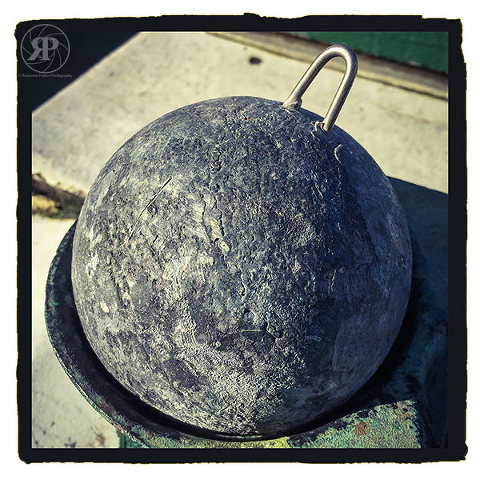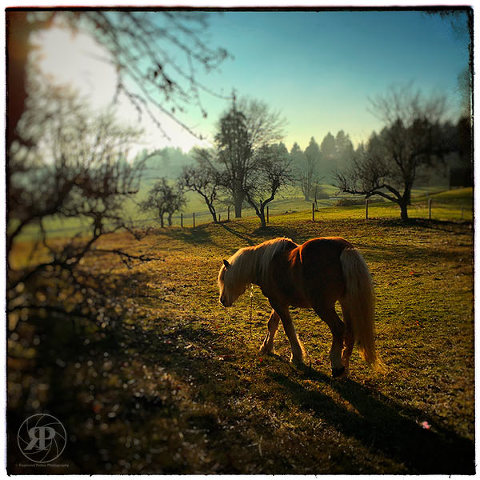.jpg)
Rationalization for a new phone — though the camera still works!
I should say right from the start of this post that the question contained in the title is strictly rhetorical. It’s a stupid question, and anyone who asks it sincerely should be immersed in cold stop bath, until they come to their senses.
A camera is a camera is a camera
Of course, any device capable of recording a latent image, whether on the latest mega-megapixel CCD sensor or on film stock that expired in 1970, exposed in a $5 plastic camera (an art practiced to wonderful effect by photographers like Eric Swanger), is a “real camera.”
This is not to say that some cameras and accessories are more suitable, or even essential, for certain projects — specialized camera/lens rigs are usually required for commercial architectural photography, for instance — but dilettantes fall into the trap of arguing over peripheral details. Internet photography forums and social media sites are full of such drivel, propagated by people who would evidently rather spend their time arguing on the Web than making photographs.
Photo snobbery
I mentioned one such character in my first post of the year, a chap who, emboldened by a couple of photography workshops and a new Nikon D600, had made it his mission to educate the unenlightened on which cameras could rightfully be regarded as “real.” Phone cameras certainly did not make the cut.
When other parties to the conversation persisted in viewing smartphone pictures as worthy of consideration, our expert declared that he had no more time to waste on us.
Techno dweebery
And so, left to my illusions, I recently upgraded my iPhone 4S to the new 6S,* with 12MP “iSight” camera, rationalized by the fact that I had slammed the car trunk on the old 4S, while hurriedly packing my “real” gear for a shoot.
This entry will not be a detailed technical review or brand comparison (for reasons outlined in the aforementioned New Year’s post, as well), there’s geek blogs for that. Rather, my words will simply record some observations to accompany recent examples shot with the new device, edited with various mobile photo apps.
Despite initial reservations, like “Do I need to buy new clothes with larger pockets?” I like the 4.7-inch 1334 x 740 display (though the larger 5.5-inch 1920 x 1080 6s Plus screen sports the king of iPhone displays, a purse is required for transport), I appreciate the increase in screen real estate over the old 3.5 inch, 640×960 4s, which now looks positively Lilliputian. It’s just nice to view, and edit, larger pictures.
Apple has also added “slo-mo” and time-lapse modes to the camera tools.
It may be banal to say that the best camera is the one you have with you, but it is true. Again, no photographer worth her salts would turn up at a wedding shoot with a smartphone, but the miniature camera technology packed into today’s phones rivals the capabilities of basic point-and-shoots, which smartphones are outselling.
Limitations
The Achilles heel is low-light performance and (according to some reviews) Apple seems to be lagging behind development in this area. My Nikon D800 DSLR performs extraordinarily well, even at ISO 3200. But, again, the comparison is foolish … apples and oranges. I must accept that there are limitations with the phone camera. As far as in-camera, or in-phone, flash photography, it only goes so far (literally).
We also have to accept that, despite the “HDR” setting, we can’t hope to match the dynamic range capabilities of a pro DSLR shooting RAW files.
Notwithstanding the “selfie” craze, most phone camera portraits suck. Because wide-angle.
Yes, there are third-party accessories to turn your Samsung into a veritable cinematography rig, by affixing stabilization, lenses, gobos and a sound-stage. I don’t see the point. Why wouldn’t I use a DSLR?
The most restrictive part of using a phone camera is the lack of manual controls; we generally can’t chose our shutter speed, ISO and depth-of-field — the fundamental creative controls in photography. But wait! There’s an app for that.
Editing tools (a descent into Filter Hell)
I’m about to horrify my former photosnob self by advocating the liberal use of photo filters. Yes, filter the hell out of your phone photos. Why not? Is there a law against it?
Generally, I’m a “straight shooter,” in the documentary tradition. And I still occasionally shoot film. But, as I’ve outlined in detail, I have no axe to grind with photographers who want to break rules, whether that means abrading the surface of silver-gelatin prints and submerging them in coffee or applying digital filters to iPhone snaps. Whether the results rise above the mundane or sink beneath the ocean of visual cliché depends, as it ever has, on the originality of the photographer’s vision.
Just to be clear, I’m not suggesting that a “grunge” filter be applied to, say, contemporary war photos (to approximate the hasty processing that give battlefield photos of the ’40s their ambiance?) and overt digital manipulation of any sort will rightly disqualify photographs claimed as faithful documentary records.
My mobile bag of diabolical tricks include Photoshop Express, Snapseed, Darkroom, and of course, the filters and effects of Instagram. On the desktop, I unrepentantly sully the purity of files with Lightroom, Photoshop and Nik software.
Size doesn’t matter
It might be argued that technological miniaturization has had the least effect on the stand-alone camera, until one considers the technology packed into the modern digital camera. As far as the DSLR goes, the mirror mechanism that enables “single-lens reflex,” rather than twin-lens or viewfinder, has been the limiting factor — hence the competition surrounding mirrorless technology. Either way, I don’t know if any of the advances of the digital age have made us better photographers.
What miniaturization and digital advancements have done, better than any development since roll-film and the Kodak Brownie, is to put a camera in the hands of nearly everyone. This is, for the most part, a good thing.
Amateurs, armed with nothing more than a smartphone and mobile editing apps, are creating beautiful pictures that put to shame cookie-cutter images made by many DSLR warriors armed with SUVs full of gear.
And, of course, professional photographers are using their phone cameras to create alternate bodies of work worthy of any gallery wall. In fact, look around and you’ll find photographers shooting strictly with phone cameras whose work is represented by top-flight photographic galleries. Which all goes to prove that it’s not ultimately about the camera.
And so:
In summary, the phone camera is portable; the technology has reached the point where accutance and detail challenges small-format film cameras of yore.
I’ve found the exercise freeing, in the sense that I just need to reach in my pocket to snap a photo. As a result, images are often more spontaneous. I also use the iPhone camera to “sketch” ideas for images/locations I’ll return to work on at a later date — when the light is right and the concept is complete — with the big guns.
And it’s fun.
I’ve launched a new Phone Photos project, drawn primarily from my Instagram gallery, featuring my explorations in Phoneography, or whatever it’s called. I’ll be expanding it in the coming days. Let me know what you think in the comments.
Trying out the iPhone 6S camera
*Update 2019: Now using the iPhone Xs.



















